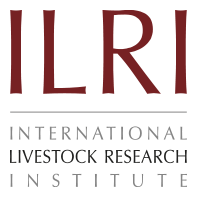Sheep breeds
Afrino
Origin and distribution: The Afrino is a white woolled mutton breed developed in a breeding project initiated at the Carnarvon Experimental Station in the Northwestern Karoo of South Africa in 1969 by the Department of Agriculture through the South African Agricultural Union. In 1976 it was evident that the cross consisting of 25% Merino, 25% Ronderib Afrikaner and 50% South African Mutton Merino best fulfilled the requirements set for the new breed. The Afrino sheep inhabits the semi-arid northwestern Karoo area of South Africa (DAGRIS 2005).
Physical characteristics: The breed was developed for fine wool, free of kemp and coloured fibres, with a fibre diameter ranging from 19 to 22 micron, and to increase hardiness and adaptation to the extensive grazing areas, in combination with good slaughter lamb at an early age, and high reproductive ability (Snyman et al. 1993).
Peculiarity: Afrino ewes have outstanding mothering abilities. Besides, lambing difficulties are extremely rare.
Breed status: The Afrino Sheep Breeders' Society was established in 1980. The Society is working in close cooperation with animal breeding scientists and selection programmes are based on scientific data generated by the Carnarvon Experimental Station which consists of 565 breeding ewes. The total population size in 1997 was 3147 (DAD-IS 2005). This in-situ conservation will keep on perpetuating, improving and increasing the breed.
Utility: Main uses are meat and wool. About 80% of income is generated through meat production and 20% through wool production; the main selection objective should therefore be to increase lifetime weight of lamb produced per ewe. Table 1 shows the component traits contributing to lifetime productivity (Snyman et al. 1993). The breed is known for its high quality meat with an even fat distribution over the carcass. Lambs do not accumulate fat at an early age and can therefore be marketed at a later stage with a higher body weight. Average marketing age is 7 to 8 months under extensive conditions. Under feedlot or favourable conditions, lambs reach marketing weight as early as three months of age (Snyman et al. 1993).
Rams are selected on growth and fleece traits and ewes on reproductive traits. During selection, much emphasis is placed on wool quality, including fibre diameter, crimp definition, clean yield, while care is taken not to decrease the amount of wool produced (Herselman et al. 1998)[CS 1.14 by Olivier] [CS 1.26 by Ramsey et al.].
Table 1. Body weights of Afrino rams and ewes at different ages under extensive conditions in the Carnarvon Experimental Station (1975-1994)
|
Trait |
Rams |
Ewes |
|
Birth weight (kg) |
5.0 |
4.7 |
|
100-day weaning weight (kg) |
30.8 |
28.4 |
|
8-month body weight (kg) |
41.4 |
37.1 |
|
12-month body weight (kg) |
56.7 |
47.9 |
|
18-month body weight (kg) |
60.0 |
48.3 |
|
16-month clean fleece weight (kg) |
2.05 |
1.97 |
|
16-month fibre diameter (µ) |
21.1 |
21.6 |
|
Average daily gain from birth to 100 days (g/day) |
216 |
202 |
Source: Snyman et al. (1993).
Table 2. Productivity of Afrino ewes under extensive conditions in the Carnarvon Experimental Station (1985-1996)
|
Trait |
Averages |
|
Body weight (kg) |
60.0 |
|
Raw fleece weight (kg) |
2.90 |
|
Clean fleece weight (kg) |
1.80 |
|
Fibre diameter (µ) |
21.8 |
|
Clean yield percentage (%) |
62.0 |
|
Staple length (cm) |
76.6 |
|
Lambs born/ewe mated (%) |
142.0 |
|
Lambs born/ewe lambing (%) |
152.0 |
|
% Stillborn lambs (%) |
3.4 |
|
Lamb survival rate (%) |
94.0 |
|
Lambs weaned/ewe mated (%) |
137 |
|
Milk production 4 weeks postpartum* |
2.9 litre/day |
|
Milk production 8 weeks postpartum * |
2.0 litre/day |
|
Total weight of lamb weaned/ewe/year |
40.7 |
*Based on 1-year data, i.e. 1995.
Source: Snyman et al. (1993).
Table 3. Average growth and slaughter traits for Afrino lambs at Carnarvon Experimental Station (1986-1991)
|
Trait |
Averages |
|
Slaughter weight (kg) |
42.1 |
|
Average daily gain (birth to slaughter) (g/day) |
184.0 |
|
Age at slaughter (days) |
223.0 |
|
Carcass weight (kg) |
19.8 |
|
Dressing percentage (%) |
47.1 |
Source: Snyman et al. (1993).
Snyman et al. (1998) also computed the number of lambs per ewe joined over 3 parities to be 4.27, the number of lambs weaned per ewe joined over 3 parties to be 3.94, and the total weight of lamb weaned per ewe joined over 3 parities to be 116.80 kg.
By utilising performance testing information, it was possible to genetically increase body weight and lifetime total weight of lamb weaned, while simultaneously decreasing fibre diameter in the Carnarvon Afrino flock (Snyman et al. 1997; Snyman et al. 1998).
DAD-IS 2005: http://dad.fao.org/en/home.htm
DAGRIS, 2005: http://dagris.ilri.cgiar.org
Snyman M.A. Olivier J.J. Cloete J.A.N. and King B.R. 1993. Produksienorme vir Afrinoskape in twee omgewings. Karoo Agric. 5(1):25-28.
Snyman M.A. Olivier J.J. Erasmus G.J. and van Wyk J.B. 1997. Genetic parameter estimates for total weight of lamb weaned in Afrino and Merino sheep. Livestock Production Science. 48(2):111-116.
Snyman M.A. Erasmus G.J. van wyk J.B. and Olivier J.J. 1998. Genetic and phenotypic correlations among production and reproduction traits in Afrino sheep. South African Journal of Animal Sciences. 28(2):74-81.
Herselman M.J. Olivier J.J. and Snyman M.A. 1998. Studies on small ruminant breeds with inherent differences in fibre production and ewe productivity. 1. Relationship between ewe productivity and wool production potential. South African Journal of Animal Science. 28(1):1-8.
Wilson R.T. 1991. Small ruminant production and the small ruminant genetic resource in tropical Africa. FAO Animal Production and Health Paper. no. 88. 231 pp.
http://gadi.agric.za/news/reports/research2005/
ResearchReport_2005.htm#3
http://www.tumpline.com/stackyard/pedigree/html/afrino.html
http://www.sasas.co.za/publications/snymangreta.pdf?sID






